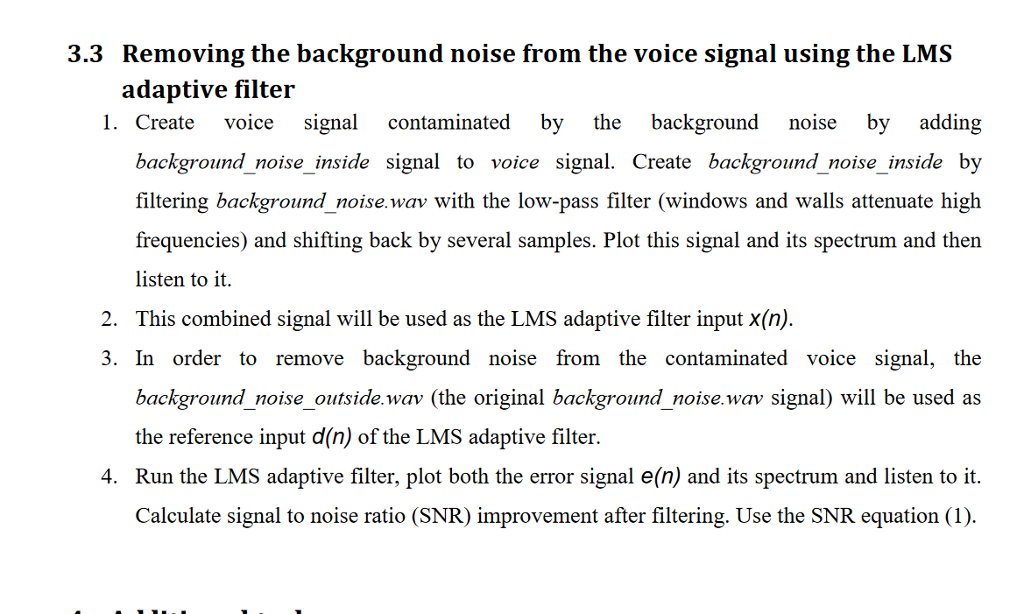Answered step by step
Verified Expert Solution
Question
1 Approved Answer
MATLAB CODING:DIGITAL SIGNAL PROCESSING 3.3 Removing the background noise from the voice signal using the LMS adaptive filter 1. Create voice signal contaminated by the

MATLAB CODING:DIGITAL SIGNAL PROCESSING
3.3 Removing the background noise from the voice signal using the LMS adaptive filter 1. Create voice signal contaminated by the background noise by adding background noise inside signal to voice signal. Create background noise inside by filtering background _noise.wav with the low-pass filter (windows and walls attenuate high frequencies) and shifting back by several samples. Plot this signal and its spectrum and then listen to it. 2. This combined signal will be used as the LMS adaptive filter input x(n). 3. In order to remove background noise from the contaminated voice signal, the background_noise_outside.wav (the original background_noise.wav signal) will be used as the reference input d(n) of the LMS adaptive filter. Run the LMS adaptive filter, plot both the error signal e(n) and its spectrum and listen to it. Calculate signal to noise ratio (SNR) improvement after filtering. Use the SNR equation (1) 4. 3.3 Removing the background noise from the voice signal using the LMS adaptive filter 1. Create voice signal contaminated by the background noise by adding background noise inside signal to voice signal. Create background noise inside by filtering background _noise.wav with the low-pass filter (windows and walls attenuate high frequencies) and shifting back by several samples. Plot this signal and its spectrum and then listen to it. 2. This combined signal will be used as the LMS adaptive filter input x(n). 3. In order to remove background noise from the contaminated voice signal, the background_noise_outside.wav (the original background_noise.wav signal) will be used as the reference input d(n) of the LMS adaptive filter. Run the LMS adaptive filter, plot both the error signal e(n) and its spectrum and listen to it. Calculate signal to noise ratio (SNR) improvement after filtering. Use the SNR equation (1) 4Step by Step Solution
There are 3 Steps involved in it
Step: 1

Get Instant Access to Expert-Tailored Solutions
See step-by-step solutions with expert insights and AI powered tools for academic success
Step: 2

Step: 3

Ace Your Homework with AI
Get the answers you need in no time with our AI-driven, step-by-step assistance
Get Started


